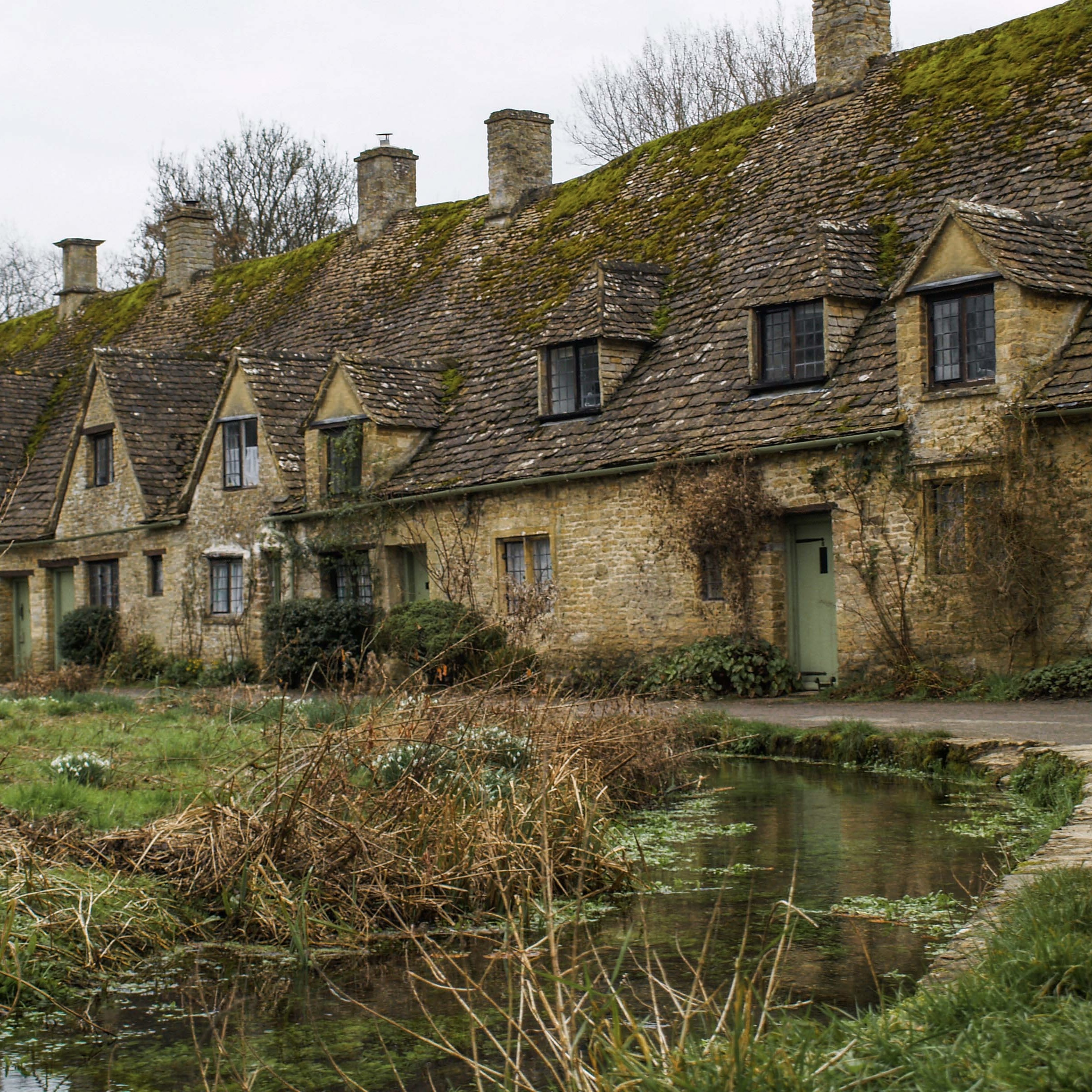
In this post, we’ll delve deeper into some of the best things to do in Bibury, from exploring the village’s historic woolen mills to strolling along Arlington Row, a row of quaint cottages that date back to the 17th century.
So sit back, relax, and let us take you on a journey through one of England’s most enchanting villages.

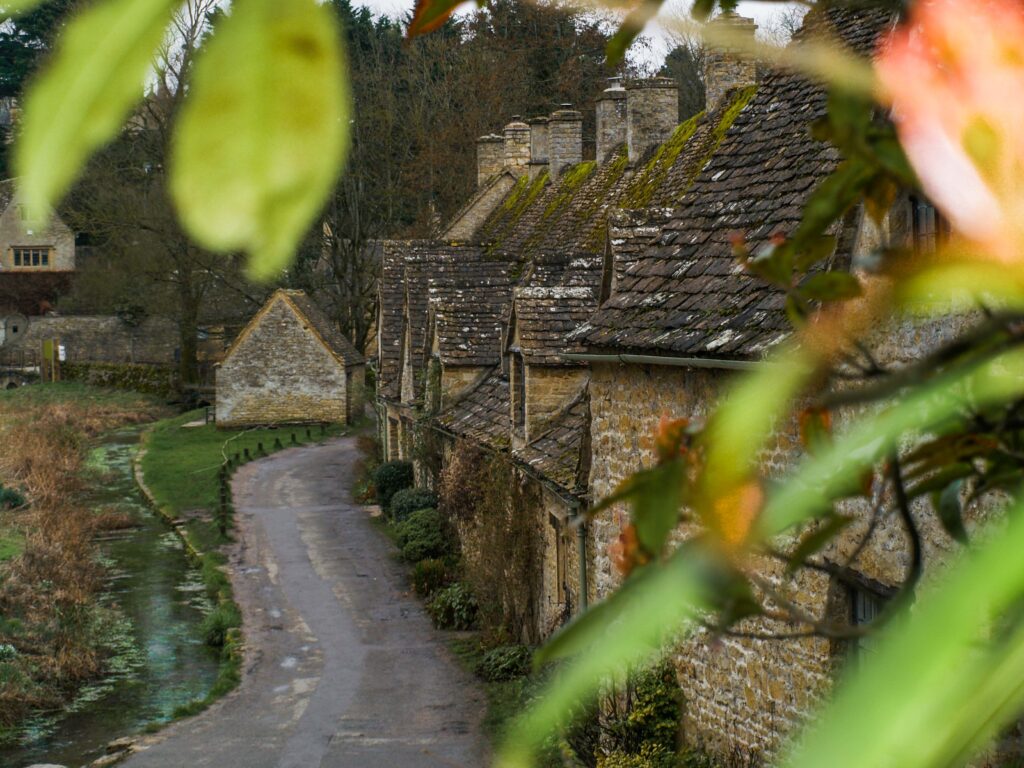
A Brief History of Bibury
Bibury is a combination of two close-knit villages: Bibury proper and Arlington. Separated by the River Coln and connected by a stone bridge, they developed together in time to create the much larger modern village. And while Bibury is the older and more historic settlement, with the growth of the woolen industry Arlington took over as the more populous one.
The wool industry has, in fact, played a significant role in Bibury’s history, shaping its economy and way of life for centuries.
From the iconic weaver´s cottages in Arlington Row to Arlington Mill and Rack Isle where the cloth was sent for degreasing or to hung out to dry respectively, and the stunning stone cottages built by the merchants who prospered from the trade, Bibury’s most popular attractions are a testament to the village’s wool industry.


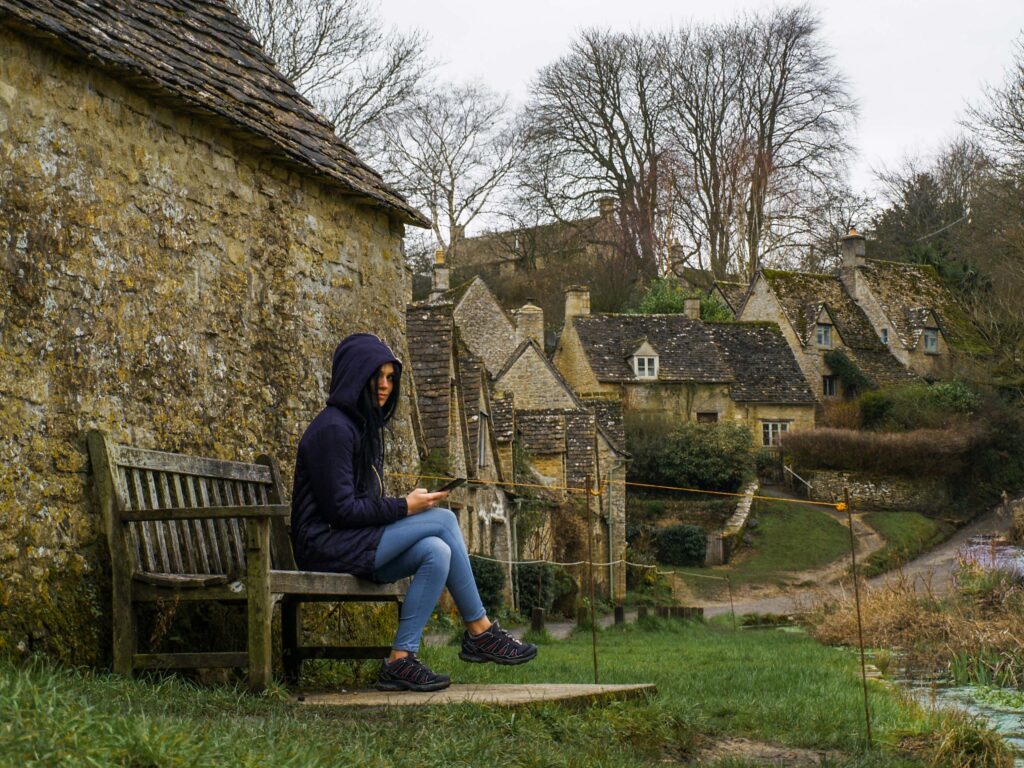
Best Things to Do in Bibury
1. Arlington Row
The ravishing row of rustic cottages found on Arlington Row street is, without doubt, the highlight of any visit to Bibury. The cottages were adapted from a large medieval barn-like building, built in the 1380s and are thought to have been used as a wool store. Gabled dormer windows and chimneys were added around 1600 when the barn was converted into a row of six weavers’ lodgings.
Enjoy a stroll down the row and find out yourself why this has been a favorite filming location for movies such as “Stardust” and “The Diary of Bridgette Jones”. It is such a nationally notable architectural conservation area that it was even depicted on UK passports between 2010 and 2015.
More than that, Henry Ford – the founder of Ford Motor – was so taken with Arlington Row that he tried to buy the entire row of cottages so he could dismantle them brick by brick and re-erect them in the US. Thankfully, Arlington Row was bought by the Society of Arts and is now owned by the National Trust which rents one of the cottages for overnight stays and leases the rest to private tenants.

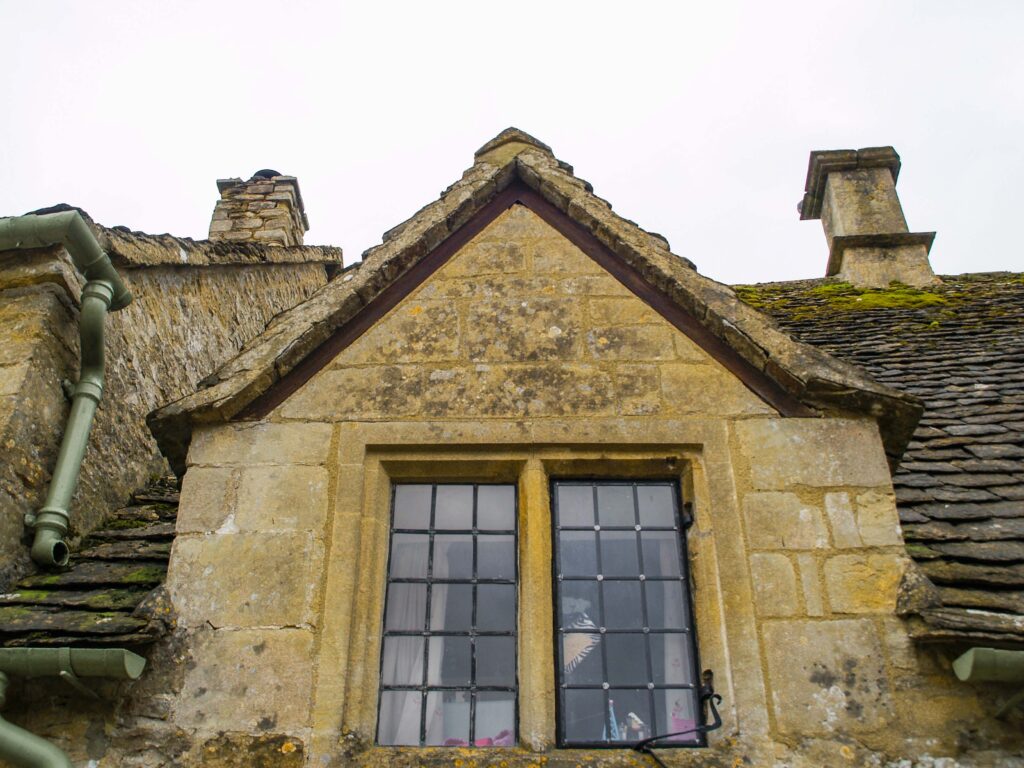
The Yellow Car
One of those tenants hit the headlines in 2017, all because of his banana-colored Vauxhall Corsa car parked outside his home. The car was accused of ‘photobombing’ and was eventually vandalized, leading his owner to replace it with one in a much more subtle color.
A few weeks later, a convoy of 100 yellow cars from across the country turned up to drive through Bibury on April Fool’s Day to show solidarity with the resident. And even Vauxhall bosses were touched by his story and named their shade of yellow ‘Maddox yellow’!


2. Arlington Mill
A combined corn and fulling mill, Arlington Mill has played an important role in the local industry since the medieval period.
It was originally built in the 17th century as a woolen cloth mill powered by a waterwheel, which was supplied with water from the nearby River Coln. The fulling process involved heavy hammers beating the newly-woven cloth thickening out the texture. At its peak, the mill employed over 30 workers and produced high-quality woolen cloth, which was sold in markets across England.
However, by the 18th century, corn was taking over from cloth as the main use of the mill, and by the end of the century, the cloth trade had disappeared from Bibury entirely. Corn milling continued at Arlington mill until 1913 and was eventually converted into a folk museum and later into residential apartments.
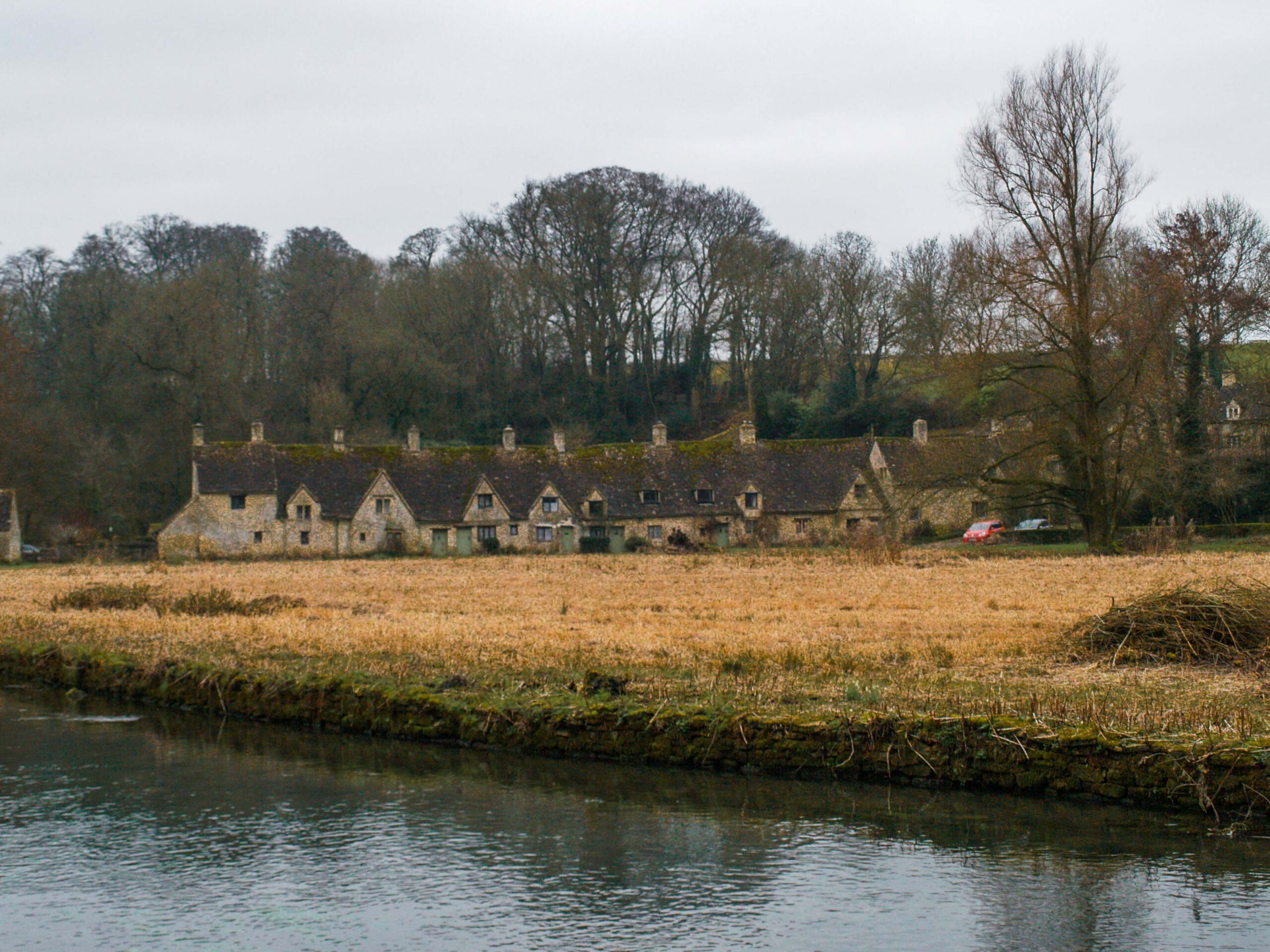

3. Rack Isle
Rack Isle is a low-lying meadow nestled in between Arlington Row and the River Coln. It is named after the racks, or drying frames, where the weavers would hang the woolen cloth to dry after the degreasing in the nearby Arlington Mill.
Today, Rack Isle is an important wetland area managed by the National Trust to protect the wildlife and complex system of waterways. Surrounded by willow trees and wildflowers, it is home to a variety of wildlife, including dragonflies, water voles, ducks, swans, and other waterfowl.
The island is accessible via a footbridge, which provides you with unprecedented views of Arlington Row and the surrounding countryside.


4. Cross the Bridges
As already mentioned, Bibury is actually a set of two villages, split by the River Coln, a tributary of the Thames. The two parts of the village blend seamlessly together thanks to a series of three bridges: the main bridge by the Swan Hotel, the new wooden footbridge, and the old stone bridge by Arlington Row.
The latter is by far the most scenic and the perfect place to snap some pictures, as it offers a beautiful view of the Arlington Row cottages. On the outskirts of the village, the Rack Isle Bridge is another stunning stone bridge that offers a unique perspective of the small island in the river that was once used for drying wool.


5. St Mary’s Church
Tucked away at the eastern edge of the village there is the Anglican Church of St Mary. The Grade I listed building dates back to the 11th century, but a Saxon gravestone embedded in the church wall speaks of a much older heritage. It contains intricately carved doorways, an unusual 13th-century square font, and medieval stained glass windows.
One of them, designed in 1927 by Karl Parsons, was even featured in the 1992 Christmas stamp set issued by the Royal Mail!
6. Bibury Trout Farm
Positioned right next to the River Coln, there is Britain’s oldest and most well-preserved trout farm, founded in 1902. The Bibury Trout Farm is a working farm that produces three types of trout – brown, blue, and rainbow – which it sells to fisheries, pubs, and local Farmer’s Markets in the Cotswolds.
The farm has its own hatchery, producing 1 million eggs a year, and a smokery, where trouts are smoked daily by traditional methods using only salt and hardwood chips.
There is also a fishery, where all equipment is supplied, while brick barbecues are available for hire!

7. Hiking Trails
If you enjoy a leisurely walk with stunning scenery along the way, then follow this popular 5.6km circular trail. Starting in the center of Bibury, it takes you around all of the village’s attractions, following rolling hills, pastures, and babbling brooks!
And if you fancy a longer walk, then opt for the Bibury & Coln St Aldwyns Circular, which is, in fact, an extension of the aforementioned trail.
This well-trodden 10km route starts in the tiny village of Coln St Aldwyns and runs alongside the River Coln all the way to Bibury. On the way back, the route takes you across high fields with stunning countryside views.



How to Get to Bibury
Bibury is a small village located in the Cotswolds, approximately 145 km west of London. There are no airports directly in Bibury but there are several ones located within a reasonable distance that you can fly into.
The nearest airport to Bibury is Bristol Airport (BRS), which is located approximately 90 km southwest of Bibury. Other nearby airports include Birmingham Airport (BHX) and Heathrow Airport (LHR), which are about 108 km north and 130 km southeast of Bibury, respectively.
From there, you can either take a train or bus to Bibury or even rent a car directly at the airport.
By Car
Without a doubt, hiring a car gives you more flexibility and freedom to explore at your own pace not only Bibury but also the other charming villages of the Cotswolds. From London, the journey takes around 2-3 hours, while from Bristol and Birmingham, it is about 1.5-2 hours, depending on traffic.
There is a limited amount of free roadside parking available on the river side of the main road (named “The Street”) and by St Mary’s Church. There is also a small free car park opposite Bibury Trout Farm which now has two dedicated coach spaces.

By Public Transport
If you don’t have a car, no matter where you’re traveling from in England, you first need to get to Cirencester, from where buses run frequently to Bibury. Cirencester itself is only served by buses, while the nearest train station to it is Kemble Station (19km away). Bus #882 runs from Kemble Station to Cirencester, with a journey time of approximately 20-25 minutes.
So this is how you will get to Cirencester: Starting your journey from London, you’ll reach Cirencester by National Express bus from Victoria Train Station (2hrs 20mins, from £8). Alternatively, from Paddington Train Station, travel to Kemble and then board Bus #882 to Cirencester.
From Bristol, travel by train to Kemble with an intermediate station at Swindon and then take bus #882 to Cirencester. Finally, if you are traveling from Birmingham, first catch a train (40 minutes, from £14) or bus (1:10, from £5) to Cheltenham and then take bus #51 to Cirencester (30′)
Once at Cirencester, just hop on Bus #855 and you will be in Bibury in about 16 minutes (frequent rides, from £2).
— BY ORGANIZED TOUR —



Where to Eat in Bibury
Bibury is so small that there are very few options for eating in the village. In fact, there are no more than a couple of options for dining, while the post office operates as a souvenir shop, grocery store, and coffee house!
The Twig ♥
Pop into The Twig coffee shop, which opened within the old village store, for a mouth-watering snack to take away while exploring the village. Alongside the excellent house coffee, try the homemade focaccia sandwiches and the sausage roll with whole-grain mustard and apple sauce.
The Catherine Wheel ♥
With its origins in two 15th-century buildings, now joined in the main bar area, Catherine Wheel has served the locality for centuries. Its low beams, stone walls, and roaring log fires make it the perfect place to enjoy a local ale in winter, while there is also a gorgeous garden for sunny days.
It serves delicious pub favorites, such as fish & chips, bangers & mash, and a traditional Sunday roast, using fresh, locally-sourced ingredients.


The Swan Brasserie
Located within the ivy-clad Swan Hotel, the Swan Brasserie is the place to go for something a little more upmarket. It offers traditional British dishes with a few European infusions and a wide array of lovely wines.
Our advice, however, would be to get there for the impressive afternoon tea menu. It wouldn’t be quintessentially British, after all, without freshly baked fruit scones topped with lashings of clotted cream and strawberry jam!
Bibury Trout Farm
Now, how about catching and barbecuing a trout?
The Bibury Trout Farm, apart from a hatchery and a smokery, has its very own fishery on-site and BBQs available for hire (March to October, Thursday to Sunday). All the equipment (rod, net, and priest) is supplied free of charge, and trout caught is charged at £10.50 per kilo. The six BBQs are in designated private pitches, available for use from 10.30 am to 4 pm, and they range from £50.00 (without a gazebo) to £85.00 (with a gazebo).
If you don΄t fancy catching your trout, visit the cafe, which is open daily. It serves the famous Bibury Trout alongside a selection of delicious locally sourced dishes, homemade cakes, and artisan coffee!


Where to Stay in Bibury
Accommodation options may be scarce in Bibury, but if you book well in advance you will enjoy a memorable stay in a cozy inn or a lovely self-catering cottage.
Bibury Farm Barns
Set on the edge of a working arable and livestock farm, Bibury Farm Barns is a stunning juxtaposition of rustic character and contemporary style. Each barn has a slightly different look and feel, and can accommodate between 2 and 8 guests, making it suitable for couples, families, and groups.
The barns themselves have been beautifully restored, retaining their original features such as exposed stone walls and ancient wooden beams, while also incorporating modern amenities such as underfloor heating, luxurious bedlinen, and natural botanical bath products.
9 Arlington Row
This is your chance to stay in one of the most iconic addresses in the UK, closing the front door away from photo-snapping tourists!
Of all the cottages of the row, owned and maintained by the National Trust, 9 Arlington Row is the only one available for private rental, for a fixed duration of 3 nights. The two-bedroom nest with the steeply pitched roof and gabled dormer windows features exposed beams, stone walls, and antique furnishings as well as a private garden and patio area.

The Swan Hotel
Ideally located in the heart of Bibury and dating back to the 17th century, the iconic ivy-clad Swan Hotel features traditional architecture and period features, such as stone fireplaces and oak beams. The hotel offers a range of accommodation options, including stylish and spacious rooms and suites, many of which offer stunning views of the River Coln or the hotel’s beautiful gardens.
New Inn at Coln
In the nearby village of Coln St Aldwyns, you will find the New Inn, a 16th-century coaching inn. It offers a traditional English pub experience with a cozy atmosphere, open fires, and a menu featuring locally sourced ingredients as well as 15 luxurious bedrooms.
All of the rooms come with en-suite bathrooms, flat-screen TVs, tea and coffee-making facilities, and complimentary toiletries. Guests can also enjoy a complimentary breakfast in the morning, which includes a selection of hot and cold dishes.



When to Visit Bibury
If you want to experience the vibrant atmosphere of the village and enjoy outdoor activities, such as hiking, cycling, and fishing, the best time to visit Bibury is during the summer months from June to August. During this time, the weather is mild and pleasant, and you can explore the village’s scenic surroundings.
On the other hand, if you prefer to avoid the crowds and experience the serene side of Bibury, then you should rather visit during the shoulder seasons of spring (March to May) and autumn (September to November). During these months, the weather is still pleasant, and you can witness the stunning colors of the surrounding countryside.
Winter is not particularly recommended as it can be quite cold and there can also be rainy and snowy weather conditions.
Now, when it comes to how much time you need in Bibury, a couple of hours is enough to see everything. However, we highly recommend spending at least two to three nights exploring the nearby towns and towns to fully appreciate the charm of the Cotswolds.

Bibury Map
Bibury exudes quintessential English beauty and makes for a peaceful retreat from the hustle and bustle of modern life. And whether you come to admire the scenery, explore the village’s rich history, or simply relax and soak up the atmosphere, this place will leave a lasting impression on your heart and soul.
So, pack your bags and get ready to discover the magic of a Cotswolds village like no other!